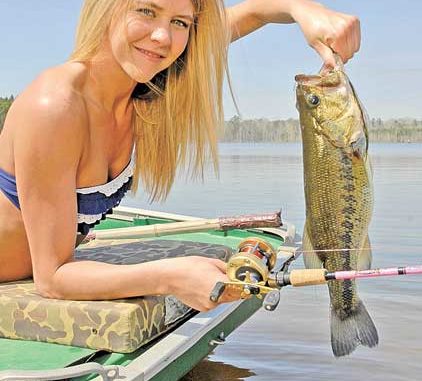
The Baton Rouge area offers plenty of public ponds that present anglers young and old the opportunity to fill their stringers.
Chicot Lake near Ville Platte has tons of cypress trees, a beautiful state park with spacious cabins, campsites with water and electrical hookups, rental boats and hiking/backpacking trails.
Chicot State Park also has a lodge, a group camp, picnic areas, playgrounds, a swimming pool, boat-launch sites and fishing piers, as well as access to one of Louisiana’s premier lakes that has produced record catches of largemouth bass, crappie, bluegill and redear sunfish.
To manage the lake for trophy bass, a restrictive length limit has been enforced on Chicot Lake.
Historically a productive lake for catching 8- to 10-pound bass, Chicot also has a lot of vegetation. In June, the bass will be moving into their summertime patterns. The fishing will be really good early in the morning and late in the evening. If you stay in a cabin by the lake, you can rest in the hot part of the day and then return to fishing when the weather cools.
I’ll start fishing early, casting a Strike King white or white/chartreuse buzz bait around the grass and the cypress trees with vegetation around them. You can get a bass bite all day fishing the buzz bait, especially under the shade of the cypress trees.
At this time of year, the temperature should be in the low-80s, which is a great temperature to get the bass to bite a topwater lure. I’ll be fishing 50-pound-test Cajun Braid line because there will be a lot of heavy cover in Chicot where the line can be drug across and broken. That heavy line will pull the bass through the cover and into the boat. The chances of catching a 10-pound bass are good at this time of year.
As the day brightens, I’ll put down my buzz bait and pick-up the Strike King Rage Anaconda worm in either redbug or Bama bug color. At this time of year, the bass often will suspend around the cypress trees. I’ll either peg a 3/16- or 1/4-ounce Tru-Tungsten sinker on the line to the head of this 10-inch worm.
The tail on the Rage Anaconda has so much action and slows the fall of the bait down so much that if you don’t peg your sinker to the head of the worm, it will slide up the line. But if the worm falls slowly around the cypress, this action will give the suspended bass a chance to see and eat the worm.
Within the first 1 to 3 feet of water, I’ll cast the big worm past the trees and then use a slow retrieve to swim it at the depth where I think the bass are holding. This way, I can keep the worm in the strike zone longer than if I fish with a swim bait.
Most people don’t swim a big worm to catch bass, but this really subtle technique often will trigger strikes from the bass. The fish see a number of crankbaits and spinnerbaits coming by these trees quickly. But more than likely, they haven’t seen a big worm swimming slowly through that depth of water.
You can catch more bass when you present a bait the bass haven’t seen in an area where they’re accustomed to seeing other types of lures.
Remember, when you’re fishing a swimming worm, don’t be too quick to set the hook. I don’t get in a big hurry when I get a bite. The bass rarely will spit this worm out, so when I feel a bite, I take my time, reel in the slack and make sure the bass is loaded up on the lure and has it well in its mouth before I set the hook.
Many times, if you just barely put a little pressure on that bait when it’s in the bass’s mouth, the fish will suck in the bait because it thinks the bait is trying to get away.
If I can’t catch the bass with this worm tactic, I’ll slow-roll a double willowleaf spinnerbait in either green shad or blue/chartreuse, depending on the water color, around the trees and the grass. If that action doesn’t elicit any bass bites, I’ll flip the grass with a 3/4- or 1-ounce sinker up the line, and peg that sinker to the head of a Strike King Rodent, allowing the sinker to punch through the grass and travel to the bottom.
Many times, later in the day, big bass will move up under those grass mats. I prefer the black/blue-colored Rodent, regardless of the water color, because this lake holds a number of crawfish. To me, the Rodent more closely resembles a crawfish under the mat than any other bait.
So if you hop the Rodent around on the bottom, swim it up under the mat and bump the mat, the bass will think a crawfish is trying to get through and on top of the mat. They’ll eat the Rodent up.
Although you may not get a lot of bites in Chicot Lake this month, you’ll have a good opportunity to catch a 6- to 8-pound bass. When I’m fishing the Rodent, I’ll be fishing it on a 7-foot, 11-inch Quantum Tour Edition PT Greg Hackney Signature Series Flipping Stick with 65-pound-test Cajun Braid line.


